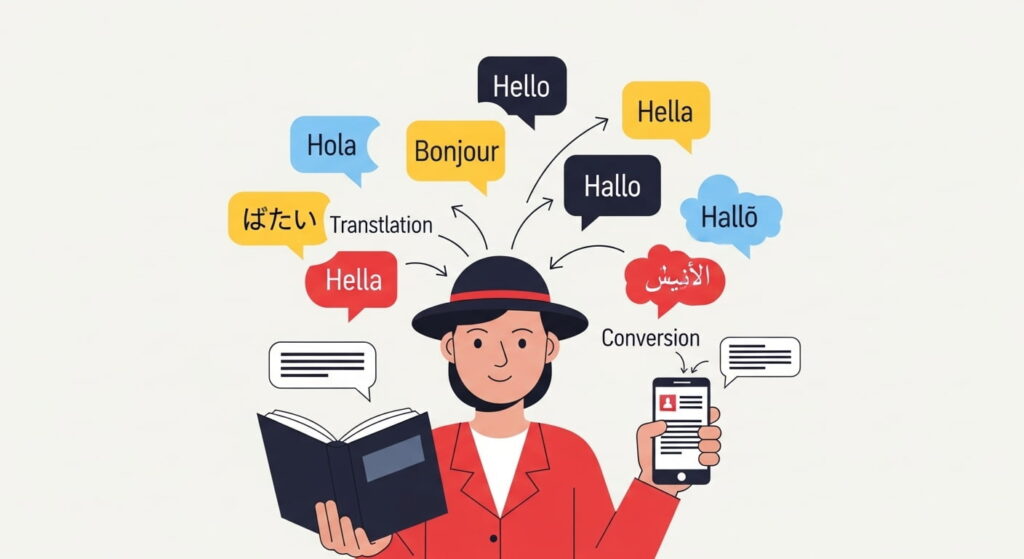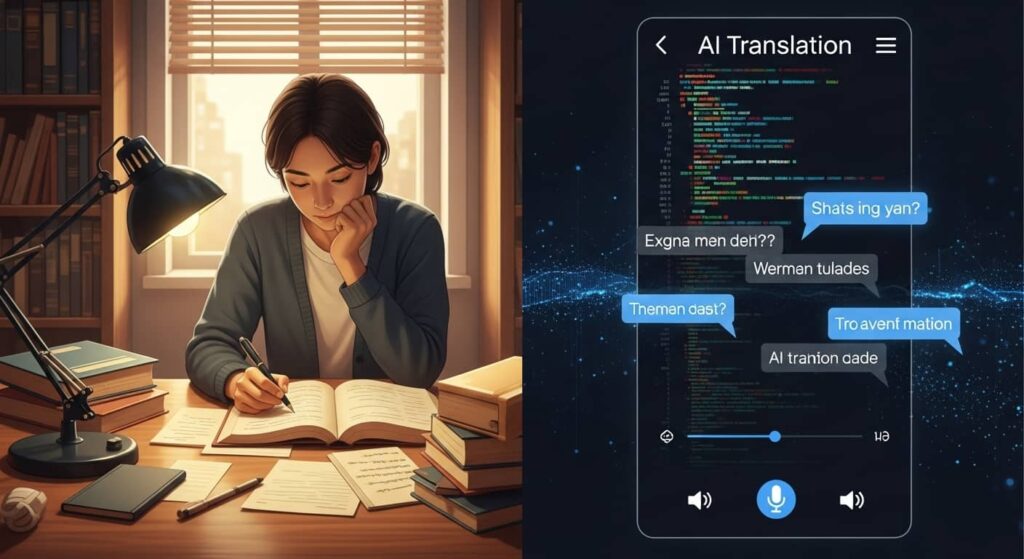Introduction
In today’s fast-paced digital world, people often come across terms and tools that seem unfamiliar at first but play a crucial role in everyday life. One such word is ceıvır. While it may appear unusual, it has deep connections with communication, language, culture, and even technology. This article will explore ceıvır in detail, highlighting its meaning, uses, history, and importance in modern times.
We’ll break down everything you need to know about ceıvır in a way that’s easy to understand, while also providing examples and practical applications. Whether you are a student, professional, or simply curious about the word, this guide will help you fully grasp its significance.
What Is Ceıvır?

The word ceıvır comes from the Turkish language. In English, it is commonly understood as translate or convert. It refers to the act of changing something from one form into another. In most cases, it is used in the context of language, where ceıvır means turning text or speech from one language into another while keeping the original meaning intact.
However, ceıvır is not limited to languages alone. It can also apply to:
- Cultural translation – Adapting ideas, traditions, or values so they make sense in another cultural context.
- Technological conversion – Changing file formats, digital codes, or data into a different system.
- Conceptual adaptation – Explaining a difficult idea in simpler terms, essentially “converting” complex knowledge into easy-to-understand words.
So, ceıvır is more than just a direct translation—it’s about transformation, adaptation, and making information accessible to different audiences.
The Origins of Ceıvır
Language always evolves with human history, and ceıvır is no exception. The word has roots in old Turkish and carries meanings related to “turning,” “converting,” or “explaining.” Over time, it became closely associated with translation, particularly because of Turkey’s long history of cultural exchange between the East and the West.
- During the Ottoman Empire, ceıvır was essential in diplomacy, trade, and education, since communication often happened across multiple languages like Arabic, Persian, Greek, and French.
- In the modern era, ceıvır became even more important with globalization, international business, and digital communication.
Today, ceıvır continues to serve as a bridge between languages, cultures, and technologies.
Why Ceıvır Matters in Everyday Life
The importance of ceıvır cannot be overstated. Imagine a world without translation—books, movies, research, and even daily conversations across countries would be almost impossible. Here’s why ceıvır plays such a key role in modern life:
1. Breaking Language Barriers
More than 7,000 languages are spoken across the world. Without ceıvır, people would be isolated in their linguistic groups. Ceıvır allows individuals to share stories, ideas, and knowledge across borders.
2. Supporting Education and Research
Academic work often requires access to international sources. Ceıvır makes it possible for students and researchers to read studies, books, and reports that were originally written in other languages.
3. Enhancing Business Communication
Global trade relies heavily on ceıvır. From contracts to marketing campaigns, businesses use translation to reach international customers and partners.
4. Preserving Culture
Literary ceıvır brings stories, poems, and cultural expressions from one language to another. This way, cultures are preserved and shared globally.
5. Helping Technology Users
In the digital world, ceıvır is crucial for software localization, website translation, and app accessibility. For example, a mobile app created in English can reach millions more people when ceıvır adapts it into Spanish, Turkish, or Chinese.
Types of Ceıvır
Ceıvır comes in many forms depending on the field and purpose. Here are the most common types:
1. Literary Ceıvır
This focuses on novels, poetry, plays, and other creative works. The challenge lies in keeping the author’s tone, style, and emotions while making the text understandable in another language.
2. Technical Ceıvır
Used in engineering, science, or IT, technical ceıvır requires precision. Translators must ensure accuracy in manuals, product descriptions, and instructions.
3. Legal Ceıvır
In law, even one small error can change the meaning of a document. Ceıvır in this field covers contracts, agreements, and court-related material.
4. Medical Ceıvır
Healthcare depends on accurate communication. Ceıvır here involves patient records, prescriptions, research papers, and hospital instructions.
5. Business Ceıvır
From advertisements to financial reports, ceıvır makes sure that companies can operate smoothly across different countries.
6. Digital Ceıvır
With websites, apps, and e-learning platforms, digital ceıvır ensures accessibility for a global audience.
Human Ceıvır vs. Machine Ceıvır

In today’s world, ceıvır happens both through humans and technology. Let’s look at the differences:
Human Ceıvır
- Advantages: Preserves cultural meaning, understands context, avoids literal mistakes.
- Disadvantages: Time-consuming, can be costly, depends on translator skill.
Machine Ceıvır
- Advantages: Fast, available 24/7, useful for everyday or simple texts.
- Disadvantages: May miss cultural nuances, often struggles with idioms and emotions.
The best approach often combines both. For example, businesses may use machine ceıvır for quick communication but rely on human ceıvır for official documents.
The Role of Ceıvır in Globalization
Globalization has made ceıvır more important than ever before. People are constantly interacting across borders, and communication needs to be smooth and accurate. Here are some ways ceıvır drives globalization:
- International trade – Contracts, marketing, and customer support all need ceıvır.
- Tourism – Travel guides, hotel services, and menus rely on ceıvır for accessibility.
- Media – Movies, TV shows, and online content use subtitles and dubbing through ceıvır.
- Diplomacy – International negotiations would fail without skilled ceıvır professionals.
Statistics show that the global translation industry is worth over $60 billion and continues to grow rapidly, proving the significance of ceıvır worldwide.
Challenges in Ceıvır
Although ceıvır is incredibly useful, it also comes with challenges.
- Cultural Differences – Words may not always have direct equivalents in another language. For example, idioms or humor can be very difficult to translate.
- Maintaining Accuracy – In fields like law and medicine, even a tiny mistake can have serious consequences.
- Technology Limitations – While machine ceıvır is improving, it still struggles with complex contexts.
- Time Pressure – In fast-paced industries, translators are often under pressure to work quickly while still maintaining quality.
The Future of Ceıvır
With artificial intelligence and machine learning, the future of ceıvır looks promising. Tools like real-time speech translation and AI-powered translation apps are making communication easier than ever.
- AI-driven Ceıvır – Programs can now learn from millions of texts to produce more accurate translations.
- Voice Translation – Devices are becoming capable of instantly translating live conversations.
- Cultural Intelligence in Ceıvır – Future technology may become better at understanding cultural context, reducing errors in tone and meaning.
Experts predict that ceıvır will become even more seamless, allowing people from different parts of the world to communicate almost effortlessly.
Examples of Ceıvır in Daily Life
To see the impact of ceıvır more clearly, let’s look at some real-life examples:
- Education: A Turkish student reading an American research paper in their own language through ceıvır.
- Business: A European company expanding into Asia by translating its website and ads.
- Tourism: A traveler using ceıvır apps to understand menus, street signs, and conversations abroad.
- Entertainment: Netflix providing subtitles and dubbing in multiple languages.
- Health: Hospitals using ceıvır services for international patients.
How to Improve Ceıvır Quality

If you are working with ceıvır, whether as a professional or using tools, here are some tips to ensure accuracy:
- Understand the Context – Always look beyond words and focus on meaning.
- Use Simple Language – Complex sentences are harder to ceıvır correctly.
- Check Cultural Relevance – Make sure idioms, jokes, and references make sense in the target culture.
- Proofread and Edit – Review translations to avoid errors.
- Combine Human and Machine Power – Use technology for speed but rely on human judgment for accuracy.
Conclusion
Ceıvır is more than just translation—it is the art and science of transforming meaning across languages, cultures, and technologies. From helping businesses grow internationally to allowing travelers to connect abroad, ceıvır plays a vital role in our interconnected world.
As technology evolves, ceıvır will only become more advanced, bridging gaps that once seemed impossible to cross. Whether through literature, business, education, or daily life, ceıvır ensures that humanity remains connected despite linguistic and cultural differences.
In short, ceıvır is the invisible thread that binds our global community, making understanding possible where barriers once existed.
